The Biosphere’s Most Wanted: 3rd March at Glentrool!
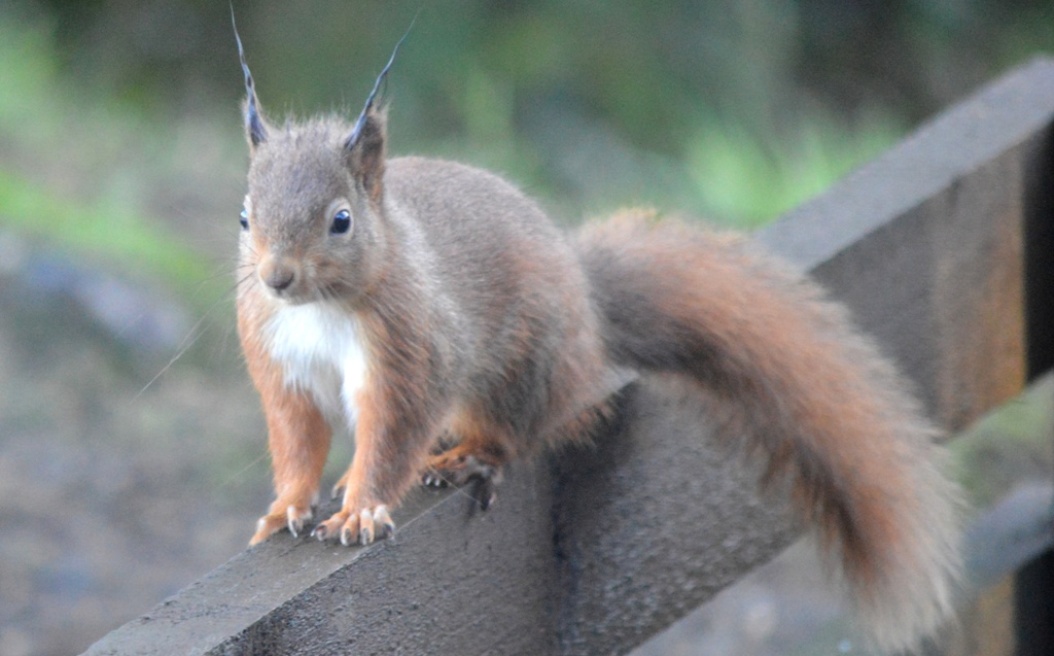
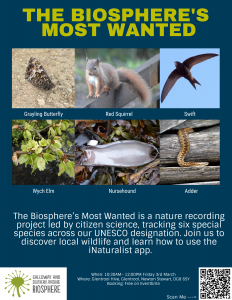 The Biosphere’s Most Wanted is an exciting new project that aims to engage individuals and communities in wildlife recording through the use of the iNaturalist app. The project – which launches on World Wildlife Day 2023 in the Biosphere Community of Glentrool – will focus on six target species that are relatively accessible but also have a tangible value in being recorded. When recorders add a photo or audio recording of a species to iNaturalist, the record (once verified) will be shared with wildlife record centres like the South West Scotland Environmental Information Centre (SWSEIC), recording schemes, conservation organisations and researchers. This method, whereby the general public collects data, is called ‘citizen science’; it’s an increasingly helpful tool for acquiring critical information on wildlife and habitats.
The Biosphere’s Most Wanted is an exciting new project that aims to engage individuals and communities in wildlife recording through the use of the iNaturalist app. The project – which launches on World Wildlife Day 2023 in the Biosphere Community of Glentrool – will focus on six target species that are relatively accessible but also have a tangible value in being recorded. When recorders add a photo or audio recording of a species to iNaturalist, the record (once verified) will be shared with wildlife record centres like the South West Scotland Environmental Information Centre (SWSEIC), recording schemes, conservation organisations and researchers. This method, whereby the general public collects data, is called ‘citizen science’; it’s an increasingly helpful tool for acquiring critical information on wildlife and habitats.
So what are we asking people to record and how exactly will it help conservation and research? We’re asking people to use their mobile phones to take photos or audio evidence of six target species which will hopefully tell us where these are located within the Galloway & Southern Ayrshire Biosphere. From this data we may also be able to infer breeding success, hotspots where a species is particularly abundant, and pressure points where it is particularly vulnerable to threats such as traffic. Our hope is that the data we collect will aid the Biosphere’s partner organizations, and be used in research that will improve local understanding and conservation of these species within our region.
So, who are the Biosphere’s Most Wanted?
Red squirrel (Sciurus vulgaris): The red squirrel is an iconic mammal that has undergone drastic national decline as a result of competition with the invasive grey squirrel, the squirrel pox virus and habitat fragmentation. Our partners at Saving Scotland’s Red Squirrels have already done extensive work within the region to facilitate local red squirrel groups. They have played a key role in grey squirrel control, targeted squirrel conservation and red squirrel recording. We are aiming to further facilitate the recording of red squirrels and are particularly interested in highlighting any local pressure points. Red squirrels are vulnerable to habitat fragmentation created by roads and particularly active logging routes. If you find roadkill squirrels, please record on iNaturalist. If we can pinpoint these locations, then our partners may be able to investigate and introduce mitigation procedures. Red squirrels are active all year round and can be found in and around woodland and rural gardens.
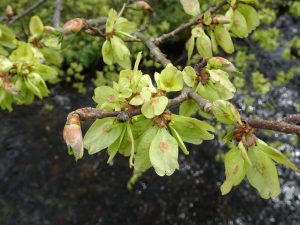 Wych elm (Ulmus glabra): The wych elm is our only native elm and like the English elm has suffered large diebacks across Europe as a result of Dutch elm disease (Ophiostoma novo-ulmi) which is spread by various elm bark beetles. The species is endangered in Europe though our local populations are doing a little better due to some trees having a natural resistance to the disease. This has sparked interest from the Royal Botanic Gardens Edinburgh and The Borders Forest Trust who are aiming to identify trees that survived the initial outbreak in the 1980s and collect their seeds to create a seedbank of trees resistant to Dutch elm disease. Specifically, we are looking for trees with a girth of over 2m – which you can test by hugging the tree! If you are unable to link your arms then it is a mature tree and should be recorded on iNaturalist. Many of the wych elms already recorded as part of The Wych Elm Hunt project have been found within towns and villages so you may not have to go far to find one. Wych elm can be seen all year round but are most easily identified in spring and summer by their winged fruits and toothed leaves.
Wych elm (Ulmus glabra): The wych elm is our only native elm and like the English elm has suffered large diebacks across Europe as a result of Dutch elm disease (Ophiostoma novo-ulmi) which is spread by various elm bark beetles. The species is endangered in Europe though our local populations are doing a little better due to some trees having a natural resistance to the disease. This has sparked interest from the Royal Botanic Gardens Edinburgh and The Borders Forest Trust who are aiming to identify trees that survived the initial outbreak in the 1980s and collect their seeds to create a seedbank of trees resistant to Dutch elm disease. Specifically, we are looking for trees with a girth of over 2m – which you can test by hugging the tree! If you are unable to link your arms then it is a mature tree and should be recorded on iNaturalist. Many of the wych elms already recorded as part of The Wych Elm Hunt project have been found within towns and villages so you may not have to go far to find one. Wych elm can be seen all year round but are most easily identified in spring and summer by their winged fruits and toothed leaves.
Grayling butterfly (Hipparchia Semele): This butterfly has undergone a 62% national decline in range and 58% in population. It requires sparsely vegetated habitats and its decline is greatest inland due to afforestation and ‘restoration’ of brownfield sites. The grayling is believed to have been abundant around coalfields and various quarry sites but due to a lack of records we do not know if this is still the case. We are interested in finding out if graylings can still be found at any inland sites and if so, how well are they doing. Unlike many other butterflies this species will attempt to camouflage itself in the substrate so you should have the chance to get a quick photo. The adults will be active from June to early September and likely to be found around bare soil, sand dunes and brownfield sites.
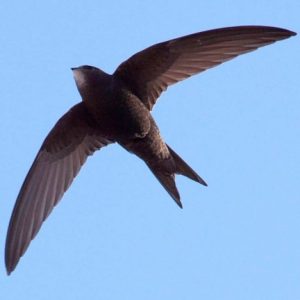 Swift (Apus apus): Swifts have undergone a population decline of 58% since the 1980s. Nesting sites have been lost due to intensified human infrastructure, a decline in their main food source (insects), and harsher migration routes caused by desertification of the Sahara and the increased frequency and power of storms. Our local understanding of swift distribution and nest sites is very poor but we expect some are likely to nest in our towns and villages. Listen out for the swift’s iconic screaming call and look out for its crescent moon shape. You can record swift conventionally through photos, but you can also record their eerie calls though on the iNaturalist app. Swifts are active in the UK from late April to early September and likely to be found around buildings, man-made structures and cliffs.
Swift (Apus apus): Swifts have undergone a population decline of 58% since the 1980s. Nesting sites have been lost due to intensified human infrastructure, a decline in their main food source (insects), and harsher migration routes caused by desertification of the Sahara and the increased frequency and power of storms. Our local understanding of swift distribution and nest sites is very poor but we expect some are likely to nest in our towns and villages. Listen out for the swift’s iconic screaming call and look out for its crescent moon shape. You can record swift conventionally through photos, but you can also record their eerie calls though on the iNaturalist app. Swifts are active in the UK from late April to early September and likely to be found around buildings, man-made structures and cliffs.
Adder (Vipera berus): Adders are doing poorly in the UK with 90% of populations believed to be in decline. The main causes are thought to be clearing and improvement of land for agriculture, forestry and urban development, habitat fragmentation, human disturbance, and decline in prey abundance. Adders have rather an unfair reputation and are far more docile and skittish than generally believed. Though no one has died from an adder bite since 1975, we do encourage recorders to be respectful around these animals. Whilst it is generally assumed adders are found throughout the GSA Biosphere, national trends would suggest there is likely to have been local declines and losses. Records will help inform us where they are still present and where they are the most abundant. Adders hibernate in winter but are active from late March to mid-September and most likely found along woodland edges, heathland and coastal habitats.
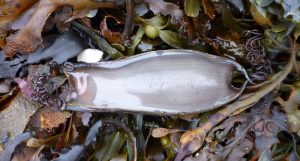 Nursehound (Scyliorhinus stellaris): The Nursehound, also known as greater spotted dogfish, is sadly following the international trend of sharks undergoing significant decline; it is rated as vulnerable to extinction by the IUCN. Like many fish stocks Nursehound are overfished, sold locally as rock salmon; they are unable to replenish their populations to meet demand, taking 4-6 years to sexually mature. Furthermore these sharks are bottom feeders and often get caught as bycatch in trawl nets, which also degrade their habitat. So: how can we record a shark? Due to climate change our local seas are warming which may improve conditions for the Nursehound; in recent decades it has bred in North Wales. Here in the Biosphere, we are not looking for the adults but for the egg case, also known as a mermaid’s purse. We expect Nursehounds may begin to breed in the Solway Firth or Irish Sea, so keep an eye out for their egg cases along your local strandline (high water mark).
Nursehound (Scyliorhinus stellaris): The Nursehound, also known as greater spotted dogfish, is sadly following the international trend of sharks undergoing significant decline; it is rated as vulnerable to extinction by the IUCN. Like many fish stocks Nursehound are overfished, sold locally as rock salmon; they are unable to replenish their populations to meet demand, taking 4-6 years to sexually mature. Furthermore these sharks are bottom feeders and often get caught as bycatch in trawl nets, which also degrade their habitat. So: how can we record a shark? Due to climate change our local seas are warming which may improve conditions for the Nursehound; in recent decades it has bred in North Wales. Here in the Biosphere, we are not looking for the adults but for the egg case, also known as a mermaid’s purse. We expect Nursehounds may begin to breed in the Solway Firth or Irish Sea, so keep an eye out for their egg cases along your local strandline (high water mark).
When members of our communities create records using iNaturalist they will automatically be made available to us at the GSA Biosphere. Where possible our team will directly verify and improve these records to ensure they get to our partner organizations and to national recording schemes.
So next time you are walking the dog or taking the weans to the beach please keep an eye out for these species and do your small part in recording them. It is your data that will be used to improve our local knowledge and conservation actions for these iconic species.
To find out more about this project and how to use iNaturalist, come along to The Biosphere’s Most Wanted launch event in Glentrool on Friday 3rd March – World Wildlife Day – free to book via Eventbrite: The Biosphere’s Most Wanted Tickets, Fri, Mar 3, 2023 at 10:30 AM | Eventbrite
This promises to be a fun morning beginning with an iNaturalist workshop at Glentrool Hive, followed by an outdoor nature recording session then a light lunch back at The Hive – please join us or email project lead Malcolm Haddow for more information via malcolm@gsabiosphere.org.uk.
